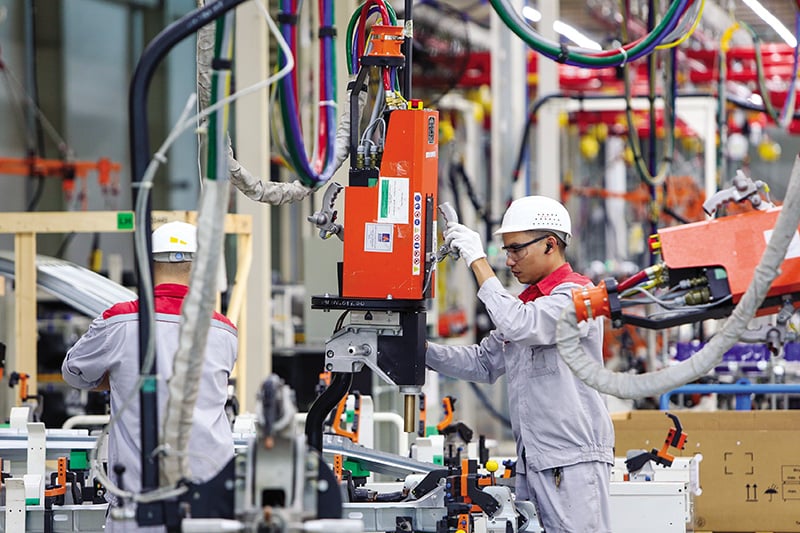 |
| Vietnam has a solid foundation to respond to challenges and maintain growth momentum. Photo: Duc Thanh |
Steadfast in hardship
There have been conflicting forecasts for Vietnam's economy in the second half of 2025, with the Asian Development Bank (ADB) and Standard Chartered both lowering their forecasts for Vietnam's GDP growth. Specifically, in the latest report released on July 23, ADB forecasts Vietnam's economic growth to reach about 6.3% this year and 6% next year. Meanwhile, Standard Chartered forecasts Vietnam's GDP growth at 6.1% this year - significantly lower than its previous forecast (at 6.7%).
The above forecasts are in contrast to previous forecasts from many other international financial institutions. Specifically, UOB Bank raised its forecast for Vietnam's GDP growth in 2025 from 6% to 6.9%; CitiGroup raised it from 6.6% to 7%; Maybank raised it to 7.3%. Meanwhile, BIDV 's research team raised its forecast for the whole year of 2025 to 7.5-7.7% (baseline scenario) and 7.8-8.1% (positive scenario)...
The contrast in forecasts shows that there are still many uncertainties and difficulties in the economy. One of the reasons is the US tariff policy, which is expected to be officially applied from August 1.
The Ministry of Finance , in a recent report to the Government, also emphasized that the US's reciprocal tax policy is expected to directly affect many of Vietnam's key export industries, such as electronics, textiles, wooden products, and seafood, etc., creating pressure on GDP growth, macroeconomic stability, employment, and social security.
 Vietnam's trade outlook remains promising thanks to a strong recovery in exports and tourism.
Vietnam's trade outlook remains promising thanks to a strong recovery in exports and tourism. 
- Mr. Tim Leelahaphan, Senior Economist in charge of Vietnam and Thailand, Standard Chartered Bank
“According to the Ministry of Finance's calculations, if exports to the US decrease by 1%, it will affect growth by about 0.08%; if domestic gasoline prices increase by 10%, it will affect growth by about 0.5%,” said Minister of Finance Nguyen Van Thang.
Although the ADB believes that economies in the Asia-Pacific region may “continue to be affected by escalating trade tensions and US tariffs”, it still emphasizes the “resilience” of Vietnam’s economy in 2025 and 2026, although growth may slow down in the short term due to pressure from tariffs.
Meanwhile, Mr. Tim Leelahaphan, Senior Economist in charge of Vietnam and Thailand, Standard Chartered Bank shared that some economic indicators may slow down in the short term, but Standard Chartered believes that Vietnam "has a solid foundation" to respond to challenges and maintain growth momentum.
In fact, because of the belief in the stability and ability to cope with difficulties of the economy, the Ministry of Finance has proposed that the Government choose a growth scenario of 8.3-8.5% this year and has been approved by the Prime Minister. The remaining question is, how can the economy achieve this high growth rate, as a foundation for double-digit growth next year?
Looking to traditional motives
For the economy to accelerate and develop, new growth drivers are important and necessary. However, while it still takes time for these drivers to take effect, for GDP growth to reach 8.3-8.5% this year, we must still rely on the three traditional growth drivers: investment, consumption and export.
When developing the economic scenario for 2025, with a GDP growth target of 8.3-8.5%, the Ministry of Finance said that the growth drivers for the last 6 months of the year include total social investment capital in the last 6 months of the year of about 111 billion USD; total retail sales of goods and consumer service revenue (current prices) increasing by about 13% or more; total import-export turnover in 2025 increasing by 17% or more.
Thus, along with promoting investment - identified as the main driving force with much room and potential for further growth, it is also necessary to exploit market opportunities to promote consumption and export.
These solutions have been repeatedly emphasized by Prime Minister Pham Minh Chinh. Affirming that the growth target of 8.3-8.5% is not an "impossible target" and "must be done", the Prime Minister directed that it is necessary to accelerate the disbursement of public investment capital, mobilize social investment, stimulate consumption and effectively carry out tariff negotiations with the US to promote exports...
The favorable factor is that the second half of the year will be the season of domestic consumption and export, which is an opportunity to promote the two driving forces of consumption and export. Therefore, many solutions will be implemented so that these two driving forces contribute more to economic growth, in addition to the investment driving force.
For example, pushing back smuggling and trade fraud; focusing on developing tourism products to attract international visitors; allocating the state budget and promptly and fully resolving policies and regimes for officials, civil servants and employees in the organizational arrangement, especially those who have decided to resign; supporting businesses to proactively prepare and boost exports to key markets from the third quarter, making the most of the peak consumption season at the end of the year...
Besides taking advantage of export markets, according to economic experts, the domestic market needs to be strongly reactivated through measures to increase disposable income for people, such as salary increases, tax reductions and consumer stimulus packages.
Regarding this issue, the Ministry of Finance is making efforts to implement many solutions, including tax deferrals, postponements, tax exemptions, etc. to stimulate consumption. The 2% VAT reduction is an example. Recently, the Ministry of Finance also proposed to increase the family deduction for personal income tax.
In addition, the payment of support money to officials and civil servants in the restructuring of the apparatus is being promoted. This is also considered to actively support the stimulation of consumption, thereby promoting economic growth.
Importantly, despite the increased risks from tariff uncertainty, domestic reforms, if implemented effectively and quickly, can mitigate these risks by strengthening domestic factors, which will also positively support Vietnam’s economic growth in 2025, according to Mr. Albert Park, Chief Economist of ADB.
Source: https://baodautu.vn/quyet-liet-cho-muc-tieu-tang-truong-83-85-d341525.html




![[Photo] Prime Minister Pham Minh Chinh meets with representatives of outstanding teachers](https://vphoto.vietnam.vn/thumb/1200x675/vietnam/resource/IMAGE/2025/11/15/1763215934276_dsc-0578-jpg.webp)
![[Photo] Panorama of the 2025 Community Action Awards Final Round](https://vphoto.vietnam.vn/thumb/1200x675/vietnam/resource/IMAGE/2025/11/15/1763206932975_chi-7868-jpg.webp)
![[Photo] General Secretary To Lam receives Vice President of Luxshare-ICT Group (China)](https://vphoto.vietnam.vn/thumb/1200x675/vietnam/resource/IMAGE/2025/11/15/1763211137119_a1-bnd-7809-8939-jpg.webp)



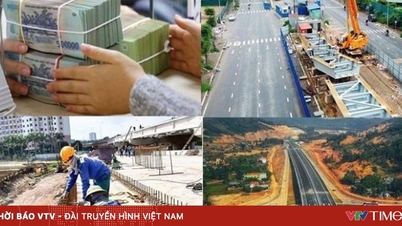


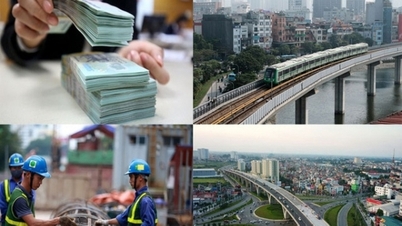








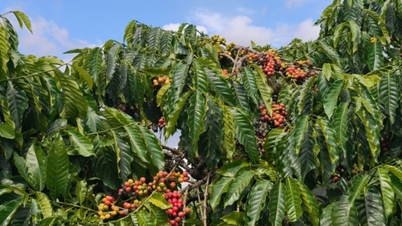


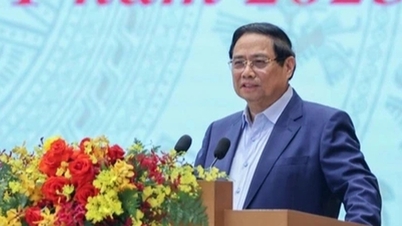
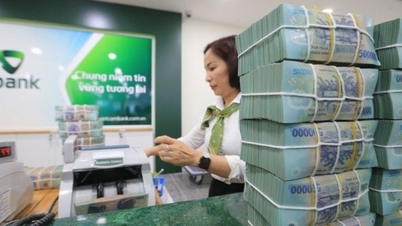




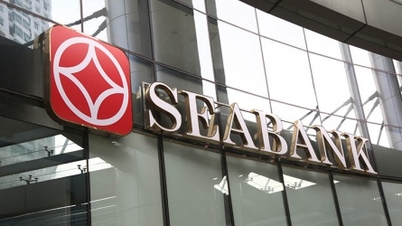

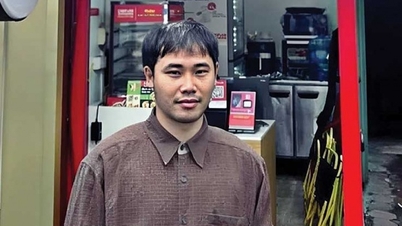








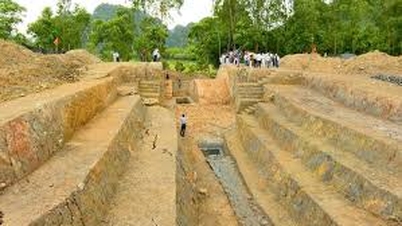




















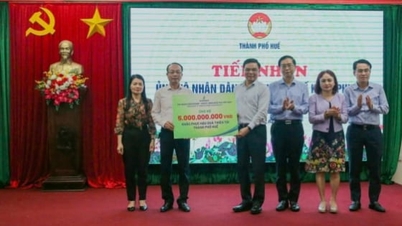






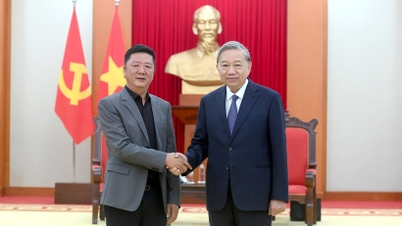






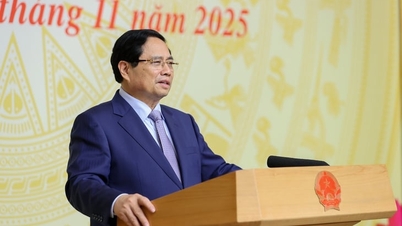





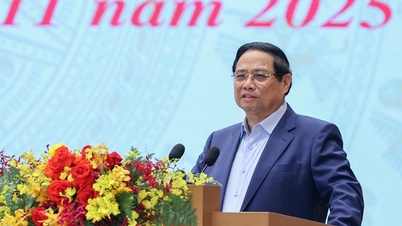

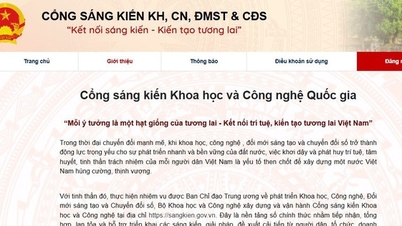












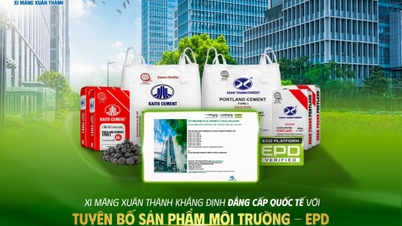
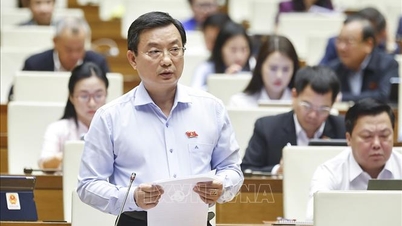






Comment (0)